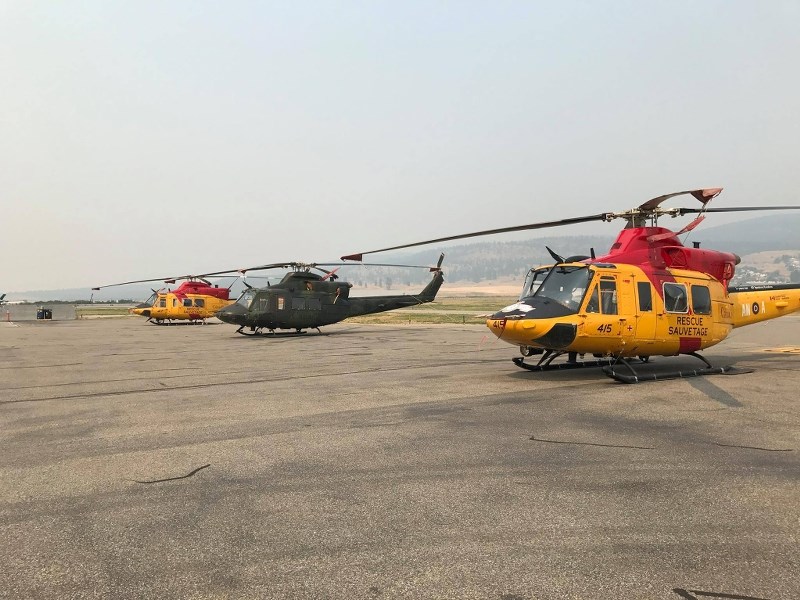Though they face an uphill battle, personnel from 4 Wing Cold Lake's 417 squadron are doing their part to combat the wildfires in BC.
The situation in Kamloops is worsening, with high winds causing fires to more than quadruple in size. Emergency personnel need all the help they can get.
Two CH-146 Griffon helicopters and a single flight crew have been sent from 4 Wing Cold Lake, to join the now country-wide effort.
“The wind really picked up on Saturday (July 15). One fire, that was 7,000 hectares in size, grew to about 50,000 as of Thursday (July 19). We have approximately 150 civilian helicopters and 36 air tankers dropping water buckets,” informed Maj. Alexia Shore, pilot in 4 Wing's 417 squadron.
Anytime the Royal Canadian Armed Forces provide Canadians with humanitarian aid, the mission is called Operation Lentus. For this particular mission, Shore was named the Griffon detachment commander.
In addition to the helicopters provided by 4 Wing, Shore's detachment has a CC-130J Hercules, a CH-147 Chinook from Petawawa, ON, as well as other aircrafts out of Edmonton.
Though it's the only available aircrew, sending Shore and the 417 squadron was a quick decision for 4 Wing.
“The higher headquarters had to make the decision because we really only had one flight crew available. They could either choose to keep us doing our job at 4 Wing, or they could send us to Operation Lentus. Ultimately they decided to send us,” said Shore.
When they're not away for operations, Shore's team acts as a combat support squadron. It's their job to perform extractions and search and rescue missions under tight time constraints.
“If someone ejects into the wilderness, we have to be airborne in under an hour to go and pick them up. The safest and the quickest way that's done is if we can land. Otherwise, we'll hover over the trees, and lower our search and rescue technician on our hoist,” Shore explained.
Those high-pressure situations are what make the difference when thrown into a disaster like the wildfires.
Because of their internationally recognized level of preparation, the Royal Canadian Air Force is more than up to the daunting task ahead of them.
“It isn't just restricted to 4 Wing, all of our aircrew are extremely well trained. It's extraordinary right from basic pilot training through getting your wings,” said Shore.
As of right now, she doesn't expect any more assistance from the base to be necessary.
However, if the weather takes a turn for the worst, and fires intensify, Shore has been given instruction to ask for help immediately.
“We have been told very clearly that if we see short falls, or if we need anything, we're to speak up. At this time we don't think we will need any more helicopter assets. To this point, we have done numerous tasks but we have been able to keep up with them, so we haven't asked for any more equipment.”



